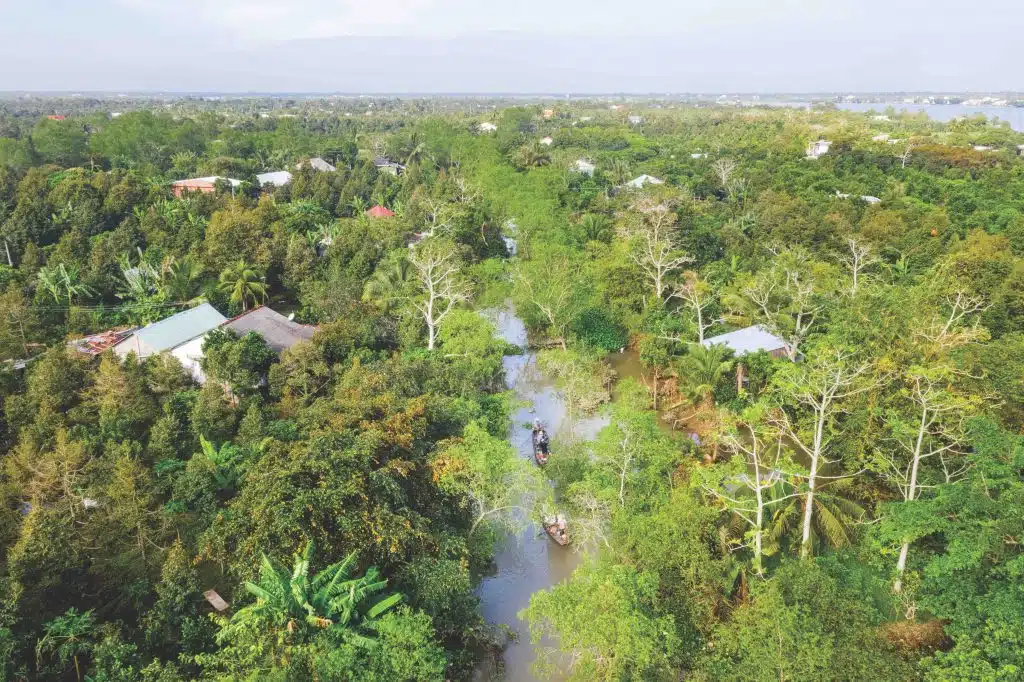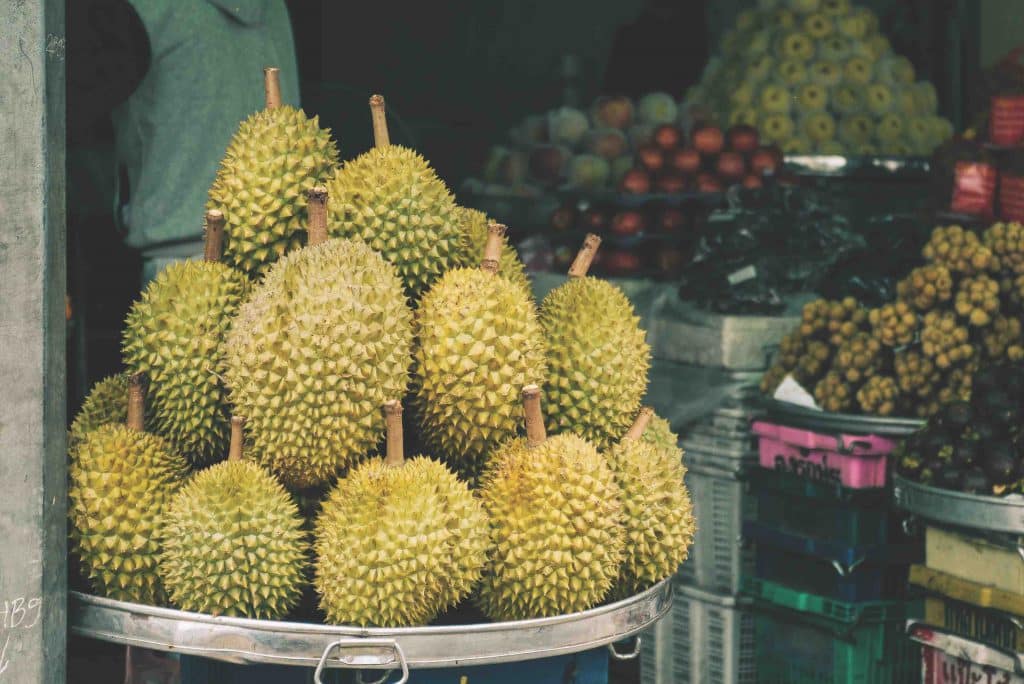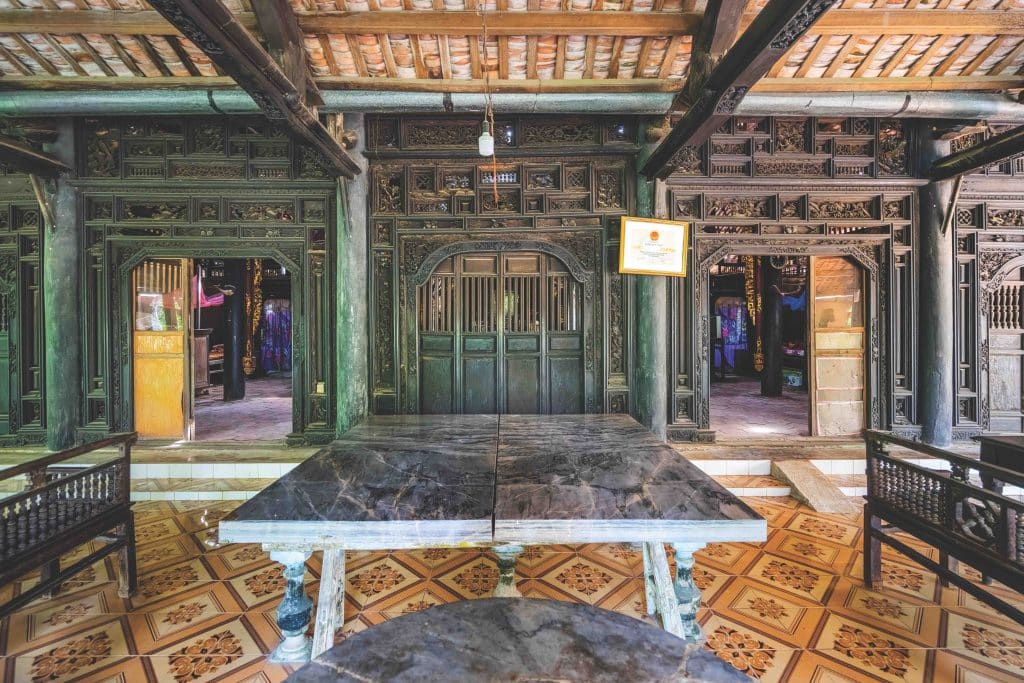Story: Phuong Nguyen
Photos: Tonkin, Phuong Nguyen
If the Hau River provides alluvium to the rice granaries of southern Vietnam, then the Tien River is the foundation of the nation’s foremost fruit-growing region. Essentially, the Tien River splits into three main branches before flowing into the sea, passing through Tien Giang, Vinh Long, and Ben Tre provinces. These areas are key suppliers of renowned southern specialty fruits.

Wandering through endless orchards
Tien River becomes the left bank tributary of the Mekong River, with the right bank being the Hau River. We explored the most significant part of this left-bank Mekong tributary, the section where the Tien River divides into three branches: the Co Chien River, Ham Luong River (in Vinh Long and Ben Tre), and My Tho River (in Tien Giang).
Flanking this river segment and encompassing its three crucial branches, these three provinces form the most famous specialized fruit-growing area in the country, renowned for both the quantity and quality of their fruits.
We began our journey in My Tho city, the capital of Tien Giang province, known for its bustling fruit wholesale markets. This region boasts a famous specialty fruit: Vinh Kim star apples. The harvest season for star apples is typically right after the Lunar New Year, around January or February. The durian season arrives some two or three months after the star apple harvest, across Tien Giang and Ben Tre provinces. The long-standing traditional durian varieties in Cho Lach district, Ben Tre are especially famous. Over time, durian cultivation has expanded across the western region. Provinces like Dong Thap and Tra Vinh also contribute to the area’s total durian output. These high-value fruit draw visitors who love sampling the durians and exploring the orchards.

As well as enjoying seasonal fruits in each locality, we also explored modern eco-tourism models. Some tours combine culinary discovery, immersion in everyday life, an exploration of the “Orchard Civilization” concept, and enjoying open, natural spaces. Eco-garden models also provide clean agricultural products grown with minimal chemical pesticides. This return to traditional cultivation methods is healthy for consumers and good for the environment. We were thrilled to try our hands at cooking, serve ourselves, harvest fresh fruit, and savor delicious dishes in the garden’s cool, serene atmosphere.
“Orchard Civilization”
The Tien River and its tributaries have long played a crucial role in the formation and development of the southwestern land and its people. History and culture form the two pillars of this region’s current prosperity.
In the Mekong Delta in general, we often hear the term “Orchard Civilization.” It’s relatively challenging to fully explain this phrase. However, it encompasses a series of images, habits, and cultural aspects of life in western Vietnam, most vividly seen in the provinces along the Tien River. When traveling to Tien Giang or Vinh Long, visitors will find many old houses from French colonial times or built in earlier architectural styles. Combined with traditional southern music genres like đờn ca tài tử, vọng cổ, and cải lương, these elements form part of the orchard civilization’s cultural essence. Bustling boats transporting fruits from orchards to markets and the region’s characteristic floating markets, especially during the busy days leading up to Tet, all contribute to the cultural landscape of this orchard region, as described in many essays by the writer Son Nam.

Along the Tien River, Tien Giang and Ben Tre are also known for their many historical sites. On our journey, we made sure to visit significant landmarks linked to notable battles of national defense, such as Rach Gam – Xoai Mut and the hometowns of legendary generals and patriotic figures like Truong Cong Dinh and Nguyen Huu Huan.
The most noteworthy landmark is Go Cong, where the Tien River flows into the sea. This illustrious region produced two Nguyen Dynasty queens: Empress Tu Du and Empress Nam Phuong. Go Cong is also famous for its feng shui. Since Lord Nguyen’s southern reclamation, this region was closely monitored by many dynasties because the majestic Truong Son Range ends here. Beyond Go Cong lies the East Sea, while before it lies the mountain range that shapes the nation, forming the backbone of Vietnam’s mainland territory.
We all cherish memories of a hometown river. As children of the southwestern region, we feel a deep nostalgia when traveling along the Tien River. It warms our hearts to pass through fruitful orchards and admire a gently flowing river and majestic cable-stayed bridges. We take pride in being born and raised by the Tien River, which has nurtured countless souls and carried the heartfelt sentiments of generations of southwestern people.










